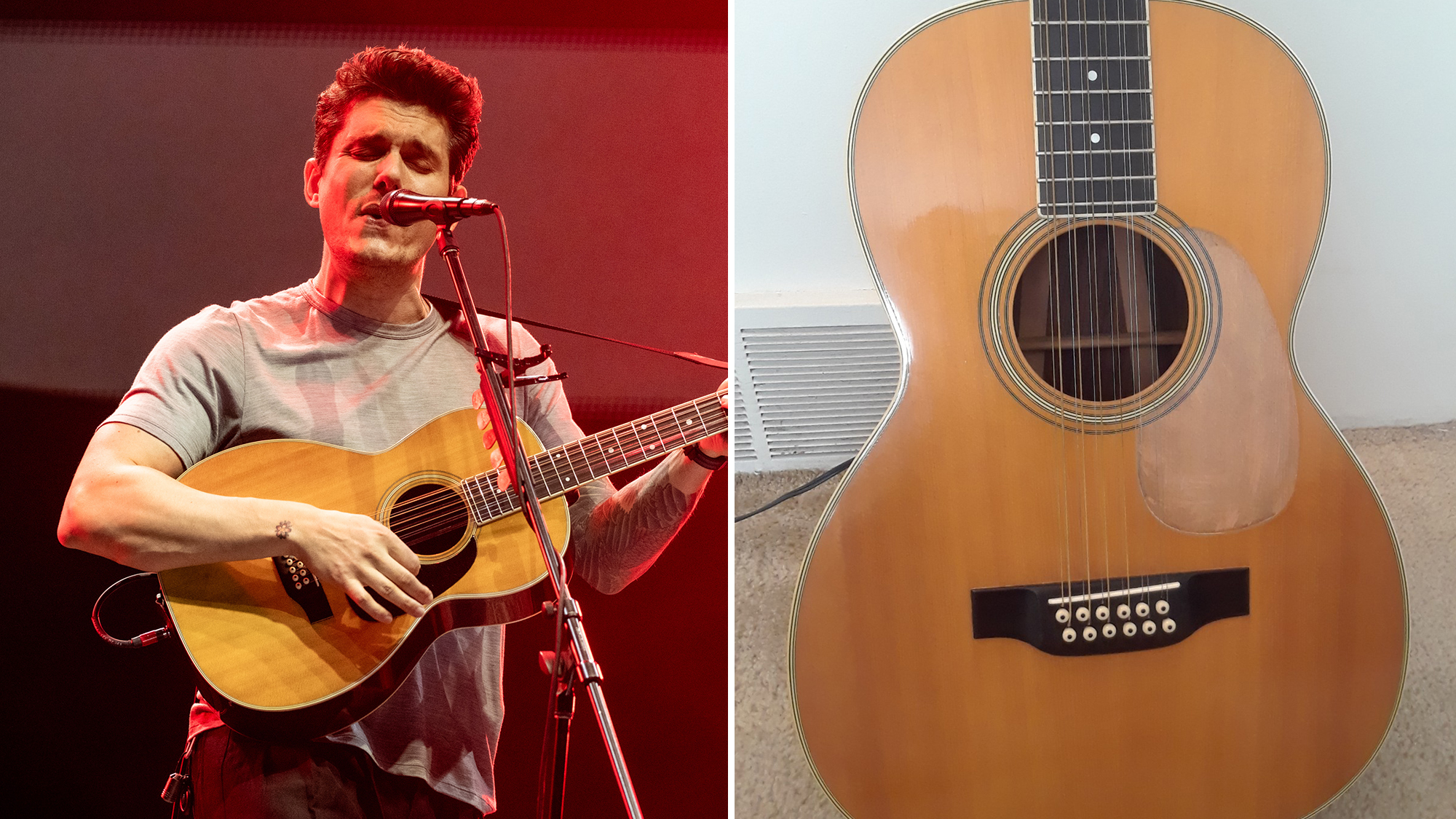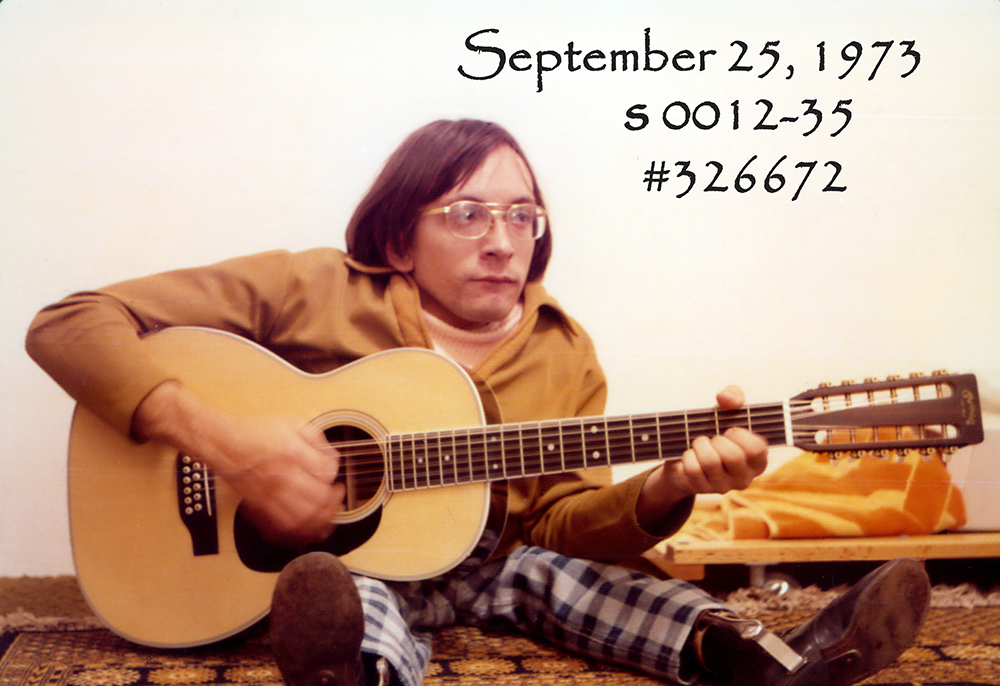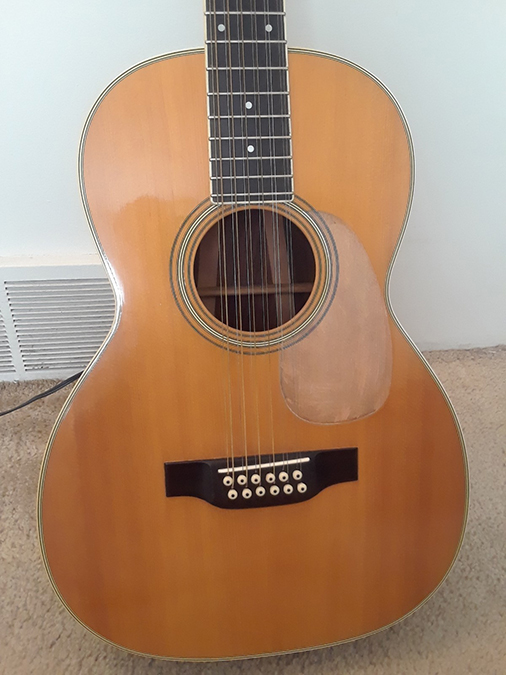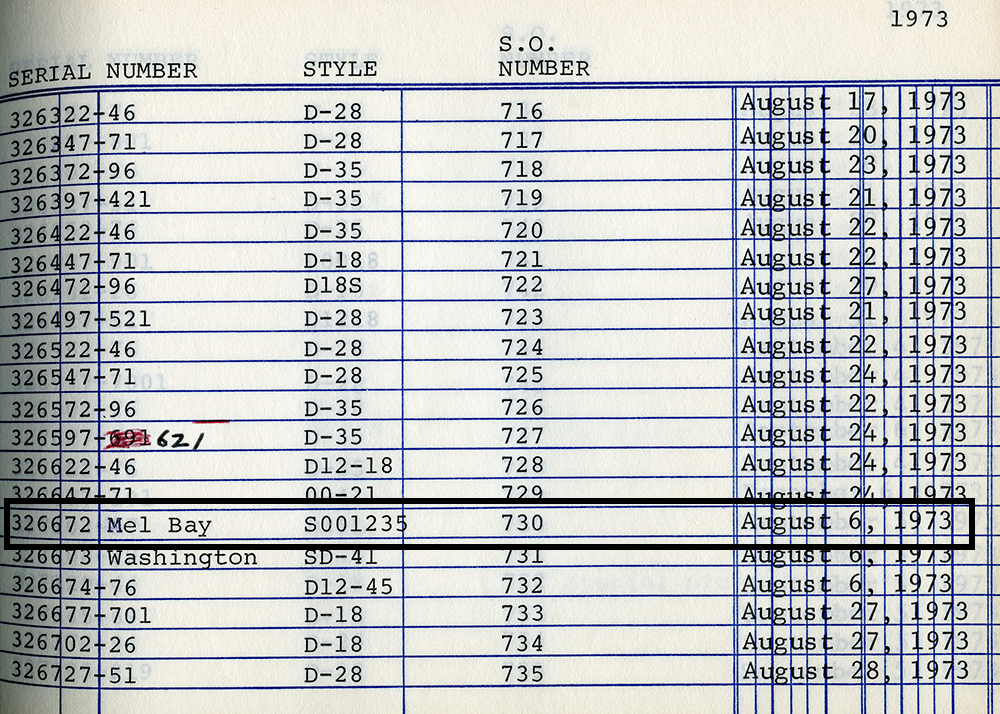
There is a dedicated John Mayer’s Gear Instagram account. There are YouTubers who meticulously break down Mayer’s assortment of gear on a tour-by-tour – and sometimes song-by-song – basis. Therefore, it’s safe to say most Mayer fans are pretty familiar with his go-to gear.
However, for all the Dumbles, Two Rocks, Fender amps and assorted Jackson, PRS, and acoustic guitars that are all well accounted for, there is one instrument that remains something of a mystery.
No, we’re not talking about that internet-breaking double-neck Martin from 2023, but we are talking about an acoustic: a small-bodied vintage Martin from the 1970s, to be precise, which is perhaps one of the rarest six-strings in all of Mayer’s collection.
That model is the Martin ‘S 0012-35’, which was built as a one-off custom order in 1973. It is, as Martin can attest, the only one of its kind in existence.
It’s bamboozled even the most eagle-eyed Mayer fans, and although it briefly featured in an overseas guitar mag – and cropped up fleetingly on a number of acoustic guitar forums – its origins, history, lineage and specs have all remained a mystery.

That’s quite a feat, given Mayer’s penchant for using it live. It starred during his recent solo tour that started 2023, and there are numerous examples of him playing it on stage. It famously went viral during Mayer’s duet with Sheryl Crow, when he used it to perform Can’t Find My Way Home and Strong Enough.
Now, after years of speculation, the Martin’s previously untold backstory has been brought to light thanks to Jim Russell – a friend of the guitar’s late original owner, who reached out to Guitar World with a full and thorough history of the one-of-one Martin.
And, as Russell explains to Guitar World, the story of the Martin S 0012-35 must start with its inspiring designer and original owner, G. Scott Robinson…
G. Scott Robinson

An avid and accomplished guitarist, G. Scott Robinson was born in 1946 with a rare genetic condition called osteogenesis imperfecta.
Otherwise known as “brittle bone disease”, the condition meant Robinson’s bones were so fragile that they would fracture at the slightest impact – even that of a cough or sneeze. He was not expected to survive beyond childhood, but he did, and by the time he was a teenager, his love for music – and folk music in particular – was already in full flow.
Robinson was faced with a number of health obstacles, but that never stopped him from pursuing his passion. He was a wheelchair user who required leg braces because his legs had not grown fully as a result of his condition. To overcome this, Robinson turned to smaller-bodied Martin acoustics, which were more manageable and comfortable to play in comparison to larger dreadnoughts.
By the time the 1970s rolled around, Robinson was living in Kirkwood, and frequented the music store that was owned by the legendary Mel Bay. With a developing interest in the 12-string sound – but the inability to play conventional models because of their size – Robinson came up with an idea: a playable, small-bodied Martin unlike any other that could accommodate six extra strings.

Through his Mel Bay contacts, Robinson was able to get in touch with Martin and create such a unique instrument, one that was envisaged as a marriage between a D12-35 and 00-21.
As Russell explains, the build took some time dial in, and there were a few obstacles to overcome along the way, but in 1973, Robinson received what would be officially labelled the Martin S 0012-35. The ‘S’, it should be said, stands for ‘Special’.
“The new guitar had an absolutely brilliant tone – it rang like a bell,” Russell tells Guitar World. “But there were concerns initially regarding whether this marriage of 12 strings with such a small body was going to last.
“Scott mentioned on more than one occasion that the guitar went back to the Martin factory for additional reinforcement on the bracing and bridge plate, as there were concerns about the amount of string tension being placed on that much smaller body. At some point in that early period, the guitar was deemed stable and Scott kept it as the crown jewel of his collection.”
It was a completely unique, one-of-a-kind build, unlike any other Martin to come before or after it. But how can it be traced back to Mayer’s own small-bodied 12-string?
The Mayer connection
John Mayer – Heartbreak Warfare Live Acoustic Solo MSG 3/15/23 – YouTube

Before now, only a handful of records about the guitar have been available publicly, including one from Japan’s Guitar Magazine that revealed Mayer’s mystery Martin was indeed labelled as a ‘0012-35’ that had been custom-built in 1973. That is an incredibly specific year, with an even more specific designation, and so the links between Robinson and Mayer began to form.
No other examples of Robinson’s design exist, and that’s a fact that has been corroborated to Guitar World by Martin. In the eyes of the firm’s archivist Jason Ahner, the guitar was built before the Martin Custom Shop was established in 1979, and, according to the firm’s logbooks, it was indeed built for Mel Bay – something Russell is able to further confirm.
As per Martin’s records, construction began on August 6, 1973, and was completed on September 17, 1973. Because of its rare pre-Custom Shop provenance, though, the whereabouts of the specs for the guitar are unknown.

However, from its construction year and official designation, to its 12-string design and Mel Bay connection, the S 0012-35 is a highly unusual guitar. And, thanks to the available literature on Mayer’s Martin, along with Russell’s recollections and Martin’s evidence, we are able to draw the line and follow the paper trail between Robinson’s guitar and the one Mayer took on tour.
Russell, who first met Robinson in the early 1980s, is able to fill in the blanks. The pair began performing together in 1985 and 1986, and when Robinson passed away in 2019, it was Russell who had been bequeathed the S 0012-35.
However, fearful that the guitar would end up collecting dust in his closet, Russell eventually decided to part ways with it – a decision that set the Martin on course to Mayer.

“I just didn’t want to have that guitar’s voice silenced like that,” he tells Guitar World. “So, along the lines of the cliché, ‘If you love someone set them free,’ I let Scott’s siblings know that I would arrange to sell the guitar on their behalf.
“A great local shop, Driftwood Music in St. Charles, Mo., helped me send the guitar on its way to an uncertain – but hopefully adventurous – future.”
In 2020, the guitar was sold, and that was the last Russell would hear of the S 0012-35, or so he thought…
“I was utterly astonished”
John Mayer – Last Train Home (12 string guitar accoustic) – Dublin – YouTube

Three years on from the sale, Russell was contacted by his Driftwood Music friend, who had a rather unexpected update related to Robinson’s S 0012-35: it had been spotted onstage in a viral video.
“He said that what he thought was Scott’s guitar had been spotted in a viral video of John Mayer playing a duet with Sheryl Crow,” Russell says. “I was utterly astonished.”
It turns out Russell’s friend from Driftwood, Pete Buncher, didn’t just see the guitar online: he saw it in the flesh when he went to go see Mayer in Saint Louis during his solo tour.
When I first saw it, I just thought to myself, ‘That has to be it. There’s only one. It has to be it’
Pete Buncher, Driftwood Music
“I kind of freaked out a little bit when I saw it on stage because I knew that there was only one,” Buncher says to Guitar World. “The guitar was custom ordered by Scotty Robinson, and since we handled part of his estate, I was very aware that there was only one of these guitars.
“When I first saw it, I just thought to myself, ‘That has to be it. There’s only one. It has to be it.’ When I got home, I started looking up pictures and videos from the solo tour to try to see if I could get a zoom in of the guitar.
“The more we zoomed in on it, the more I was like, ‘Oh my gosh, that’s it. That’s the guitar I worked on.’”
Buncher’s familiarity with the S 0012-35 goes beyond identifying it from a distance, though. It was Buncher himself who appraised and repaired the guitar when it first came to Driftwood courtesy of Russell.
John Mayer Solo – “Something Like Olivia” Kia Forum, LA 4/14/2023 – YouTube

“When I first got the guitar it had been sitting unplayed for a while and was in need of a few repairs,” he continues. “I replaced the pickguard because the original was shrunken and curling up. I repaired a crack near the pickguard area. I was able to lower the saddle and once all the work was finished, it played great.
“It was a really fun guitar! Small-bodied 12-strings are always unique in themselves, and having the comfort of a small body but the full, rich sound of a Martin 12-string was awesome.”
After digging around YouTube, Russell later found the videos of Mayer playing that unmistakable small-bodied 12-string (which had now been restored with its new pickguard, after the original was removed years earlier) began to pile up. Mayer used it to play Heartbreak Warfare in 2023, and it was spotted in clips from Dublin, London and Tokyo throughout 2024.
“I can’t imagine a more gratifying tribute to the memory of my friend Scott than to see an instrument that he designed and treasured, one with such a sweet and powerful voice, in the hands of a true master as John Mayer entertains thousands upon thousands across the globe,” Russell notes.

How exactly Mayer got his hands on the S 0012-35 remains something of a mystery. A video from Emerald City Guitars published in 2022 somewhat sheds light on the story, and it seems as though the vintage dealer was the middle man between this unnamed owner (who presumably purchased it two years prior) and Mayer himself.
Not much else was offered – mention of the “one of one” guitar itself is very brief, at the 10:13 mark in the video below – and as such only Mayer (and Emerald, who were contacted for comment on this story) will know the full tale of how it ended up on stages all around the world.
But, as Russell puts it, it’s a fitting chapter for such a unique guitar, and a worthy tribute to the musician who first brought it to life.
“I would love to know what John Mayer himself says about this great guitar,” Russell concludes. “I’d love to know how he acquired it, but as of yet I’ve not been able to find out. I’m also hopeful that John might appreciate hearing how this singular instrument came to be.”
More about acoustic guitars
Discover more from Cave News Times
Subscribe to get the latest posts sent to your email.



































Discussion about this post